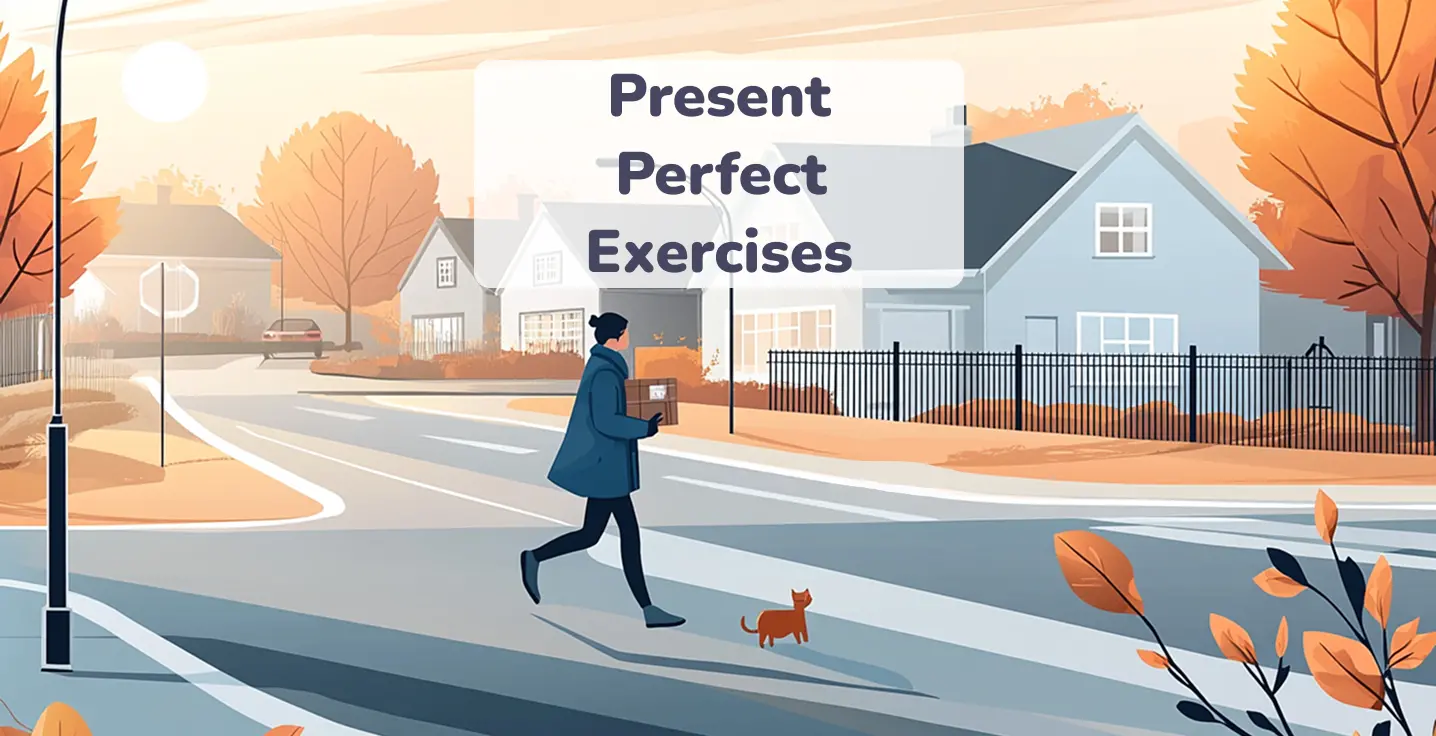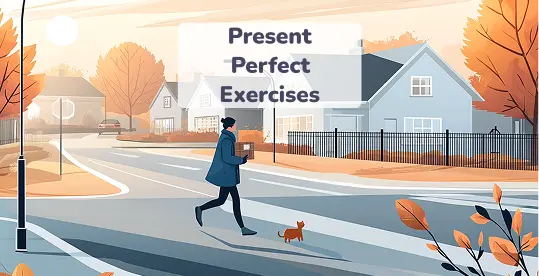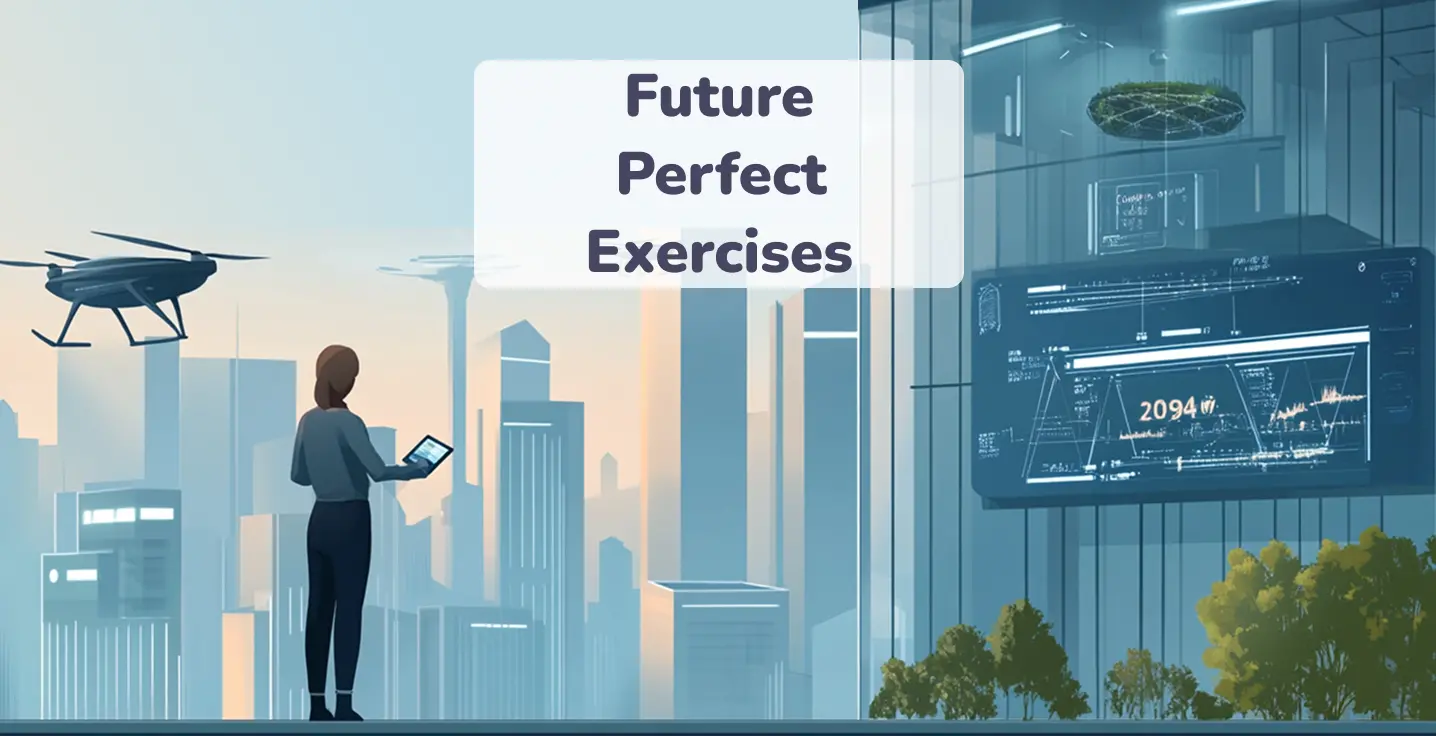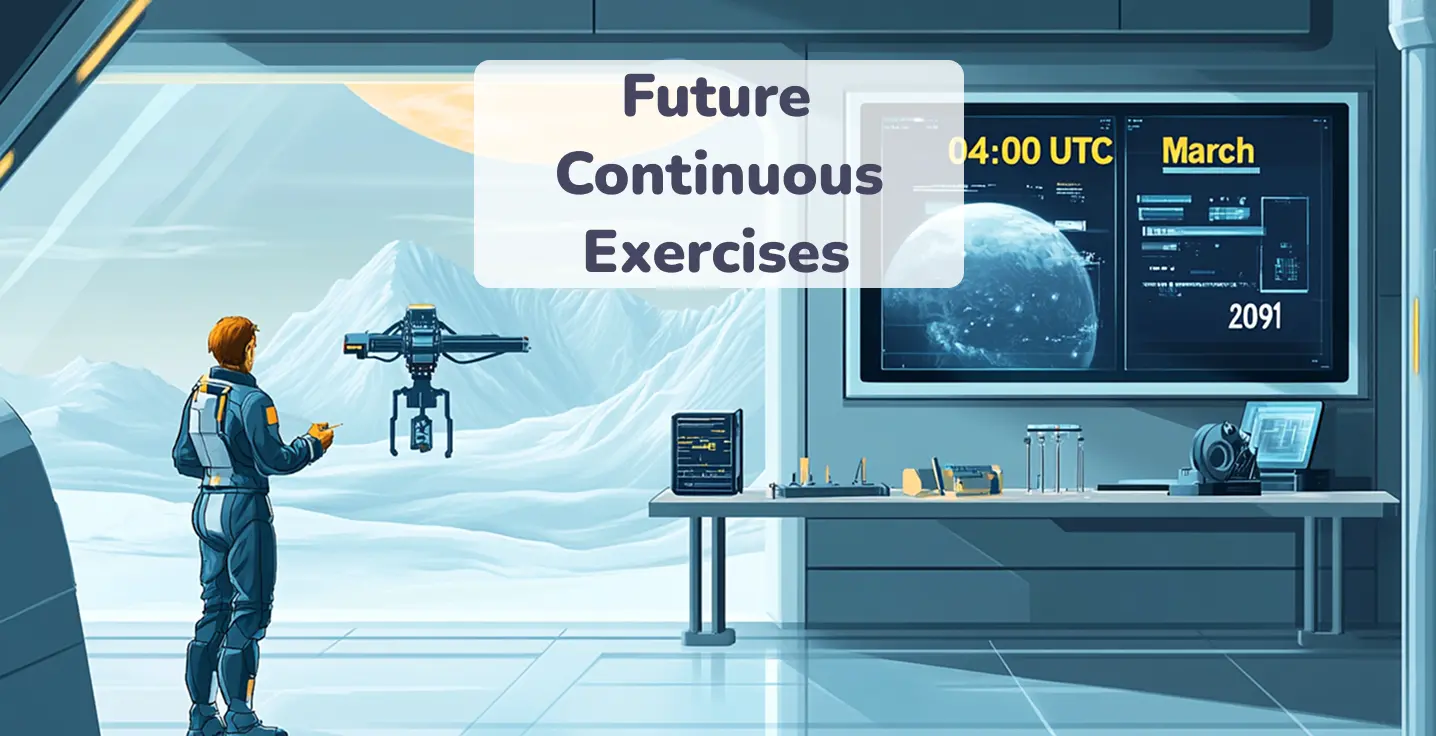Present Perfect exercises
What is the best Present Perfect quiz for self-study?
Solo learning English calls for smart tools. The most effective Present Perfect quizzes test real understanding, explain answers, and build fluency step by step. Use this table to find the formats that work best:
| Exercise type | What it tests | Why it’s great for self-study | Example |
|---|---|---|---|
|
Fill-in-the-gap drills |
Sentence structure, time expressions |
Helps internalize the form and spot common mistakes quickly |
She ___ (never/see) a whale before. has never seen |
|
Multiple choice |
Meaning, usage differences |
Ideal for studying how context changes meaning |
I ___ my keys. A) have lost |
|
Error correction |
Sentence analysis, tense logic |
Sharpens editing skills and builds accuracy |
Before: He have gone to the gym.
After: He |
|
Sentence rewriting |
Flexibility with structure |
Trains you to switch tenses and think more fluently |
Before: I ate a salad. After: I |
|
Mini dialogues/stories |
Real-life use, tone, and fluency |
Brings the tense into everyday language and natural flow |
— Have you ever been to Italy?
— Yes, I have.
|
|
Mixed tense review |
Contrast with past simple, past perfect |
Reinforces when to use present perfect — and when not to |
I |
How to choose the right Present Perfect tense exercise for your level?
Not all grammar tasks are created for the same level. Some focus on rule recall, others aim for practical use. The decision tree we provide helps you select the right Present Perfect tense exercise based on what you know and what you need next.
— Can you confidently form basic Present Perfect sentences?
If your answer is no, then remember that short sentences build muscle memory, try them first. Present Perfect tense exercises with answers to try:
-
Fill-in-the-blanks
I ___ (already/eat) lunch.
Answer: have already eaten
-
Choose the correct form:
He (has/hasn’t) worked hard this week.
Answer: hasn’t
-
Pick the right verb form
She has (go/gone) to the store.
Answer: has gone
— Can you tell the difference between Present Perfect and Past Simple?
Not quite there yet? These assignments help lock in when to use each tense. Start with the following:
-
Choose a contrast Present Perfect tense exercise and timeline matching:
Before:
I ___ (meet) him last week. vs. I ___ (never/meet) him before.
After:
Imet him last week. vs Ihave never met him before. -
Match the sentence to its timeline:
Shehas never ridden a horse. (Life experience, present relevance)Weate dinner at 7 PM. (Specific past time)
— Are you ready to use the present perfect in real-life conversations or writing?
It’s time to move beyond drills and into practice that mimics how we speak and write. Try these types of exercises to build fluency and confidence:
-
Fill in the missing parts using the present perfect tense:
A: You look different.
B: I ___ (cut) my hair.
Answer: have cut
-
Prepare and act out a short scenario with a partner or teacher:
You’re helping a friend pack for a trip — ask about what he/she has already done and what hasn’t.
A:Have you packed your passport yet?
B:No, Ihaven’t packed it — thanks for the reminder!
A:Have you booked the hotel?
B:Yep, I’ve already booked it and even checked the reviews. -
Present Perfect quiz to spot and fix the mistake:
He has break his phone again.He has broken his phone again.
Whichever path you take, the right exercise should be just hard enough to make you think — but not so hard that you need a grammar lifeboat. Check your answers, learn from mistakes, and make repetitions whenever you level up.
Common mistakes learners make in Present Perfect tense exercises
You’ve probably used the Present Perfect more times than you realize — and maybe a few times you shouldn’t have. Let’s fine-tune your instincts before these little hiccups turn into habits.
-
Using the Simple Past instead of the past participle. The Present Perfect needs a past participle, not a Simple Past verb. Mixing these up is like putting diesel in a petrol car — it just won’t run right.
I have forgot my keys again.I have forgotten my keys again.Tip: If the verb doesn’t look “finished,” it probably isn’t the past participle.
-
Forgetting have/has. This one’s a classic that met in the Present Perfect worksheets. Students often drop the helper verb entirely, especially in speech. But without have or has, the tense falls apart.
I seen that movie before.I have seen that movie before.Tip: Think of have or has as the heart of the tense — no engine, no movement.
-
Confusing since and for. These two may look friendly, but they’re not interchangeable. Since points to the starting moment, while for covers a duration.
I have lived here since five years.I have lived here for five years.Tip: Since loves clock time or a specific point: since 2018, since Monday, since I was a kid. For handles the how-long: for three days, for a decade, for ages.
How to improve your speaking with daily Present Perfect activities?
Improving your speaking skills with everyday Present Perfect exercises with answers brings your English to life. Regular use of the Present Perfect tense helps you talk about experiences and changes in a natural way, making your conversations richer and more engaging.
By practicing daily, you build confidence in using this tense spontaneously, which is essential for smooth communication.
Incorporate simple activities like sharing recent experiences or achievements with a friend or language partner. For example, talk about what you’ve done so far today or what you’ve just finished — I’ve just read an interesting article or I’ve visited three new places this year.
3 tips to structure your Present Perfect practice routine
Setting up a smart routine for Present Perfect exercise can take you from confused to confident, without the grammar fatigue. Here’s how to keep your learning sharp, focused, and (dare we say) even enjoyable.
-
Set a mini-goal for the day
Spend 5-10 minutes daily on one micro-skill, like forming positive sentences, using yet and already, or asking experience-based questions. For example:
- Write 5 sentences starting with Have you ever…
- Write 3 things you have already done today and 3 you have not done yet.
-
Mix up exercise types
Variety trains your brain to recognize patterns and apply grammar in context when studying English. Alternate between fill-in-the-blank drills, error correction, mini-dialogues, and verb transformations.
-
Use it in real life
Grammar is not meant to stay in the Present Perfect worksheet. Drop the tense into everyday speech or writing. Example topics to talk about:
- Things you’ve achieved this week
- Foods you’ve never tried
- Movies you’ve recently watched
How often should you take a Present Perfect test to see progress?
Progress deserves time to settle. Constant exercises in the Present Perfect turn into noise, while a well-timed review offers clarity. Let your skills breathe before you measure them.
-
Week 1–2: build the base.
Focus on the structure (have/has + past participle) and key uses like life experiences and unfinished time. Take 2 short quizzes and track common mistakes. Keep a running list of verbs and time expressions — they’ll keep coming back.
-
Week 3–4: practice and strengthen.
Add irregular verbs and question forms. Take 1 full test, follow up with 2–3 writing prompts, and review your patterns. Make it personal — grammar sticks when it’s about your real life.
-
Week 5+: mix, apply, repeat.
Alternate quizzes with speaking drills and tense comparisons. Try creating your own questions for Present Perfect tests and taking a formal quiz every two weeks.
-
Ongoing: monthly check-in.
Set one grammar goal, take a mixed-tense test monthly, and review every 10–14 days. Track how confident and accurate you feel.
What to learn next after completing a Present Perfect tense practice?
So you’ve conquered the Present Perfect? Time to build on that grammar power. Here’s where your next steps should go:
- Present Perfect Continuous to express ongoing actions.
- Differentiating Past Simple and Present Perfect based on time context.
- Deepening understanding of time expressions like already, yet, since, and for.
- Practising question forms and short answers for smoother conversations.
- Working on tense contrast exercises with other past and future tenses.
Keep building your grammar toolbox with Koto English, each new tense adds more precision and confidence.






